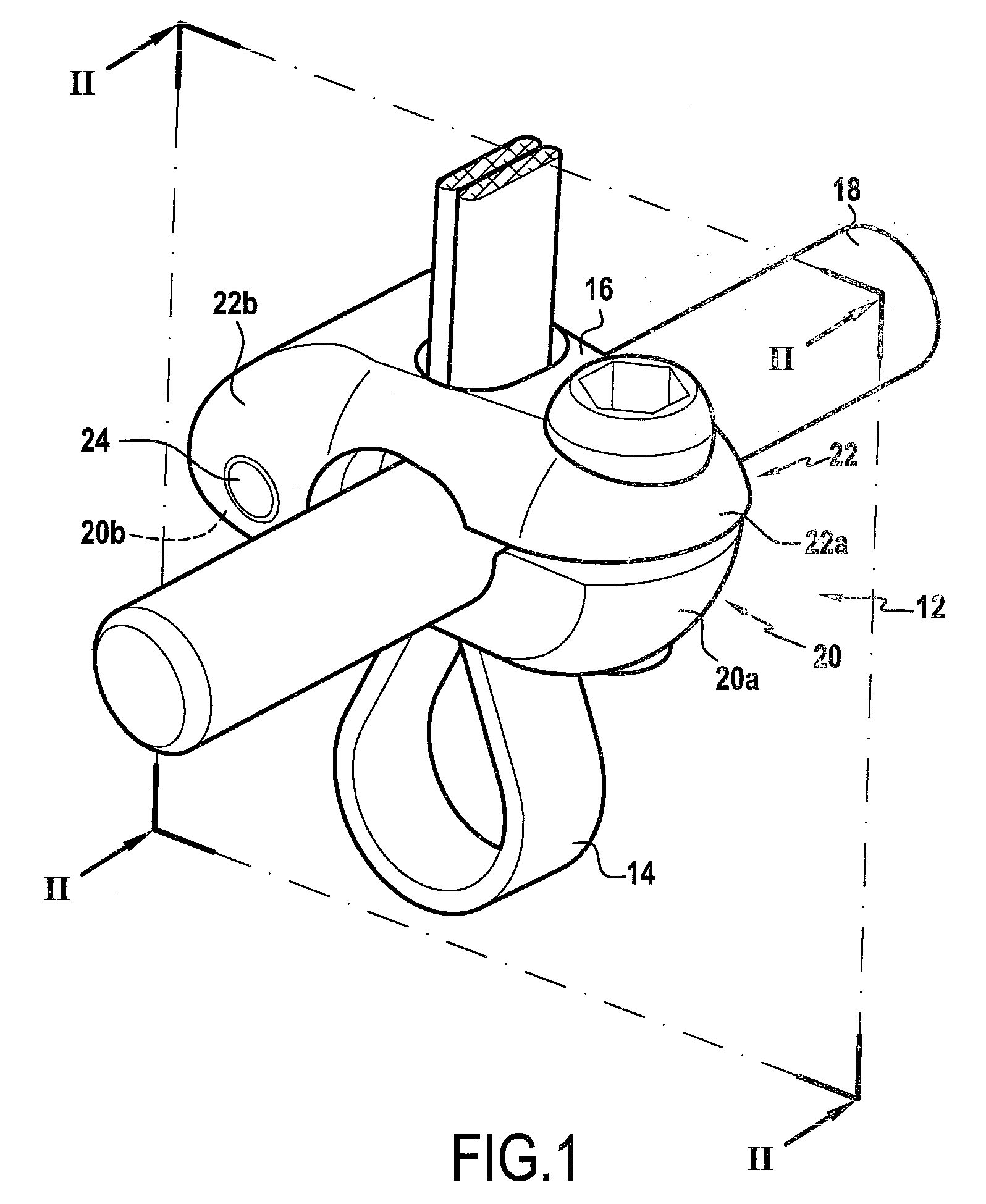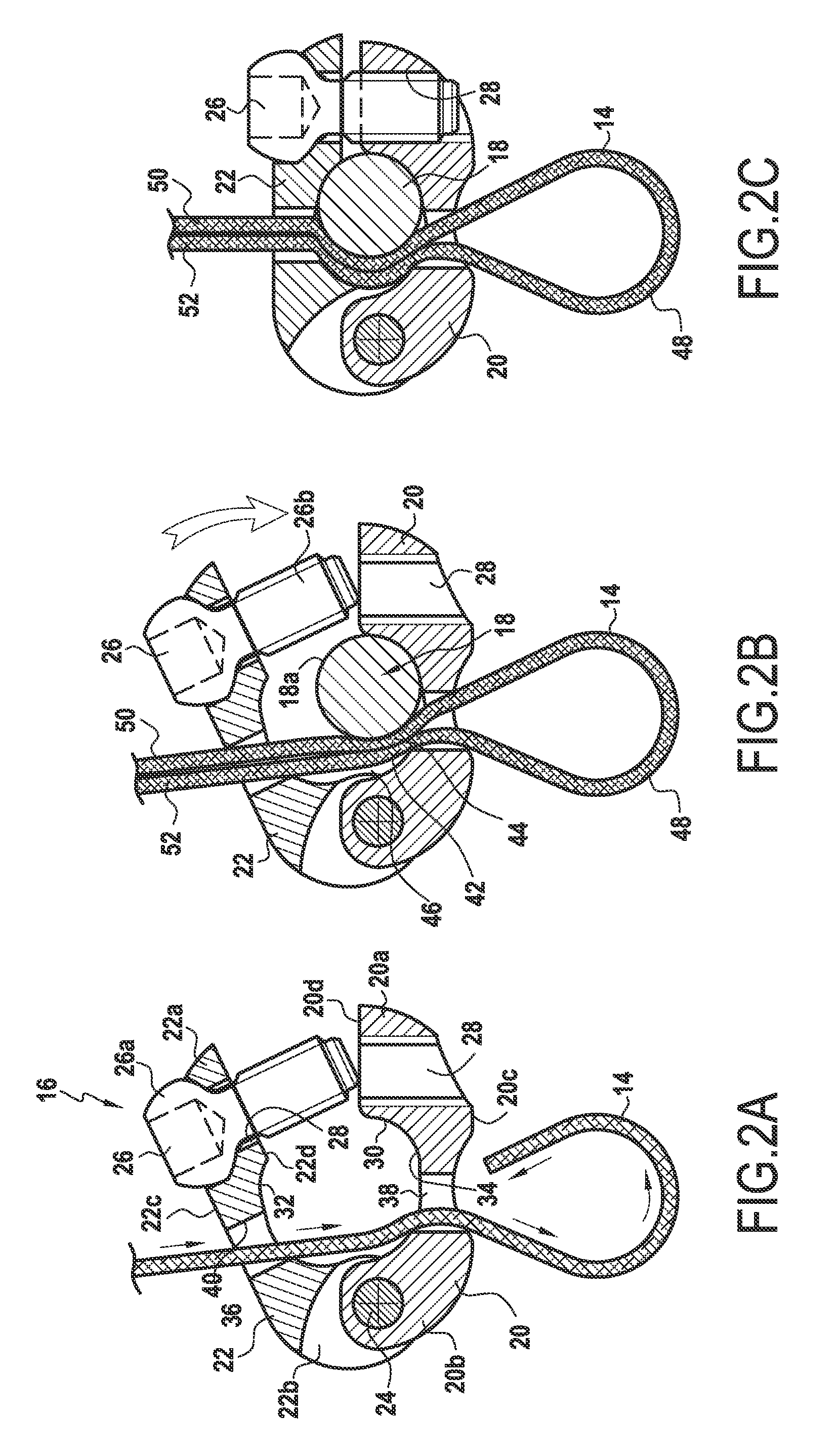Vertebral fixing system
a technology of fixing system and vertebra, which is applied in the field of vertebral fixing system, can solve the problems of ligature jamming and the inability of ligature to perform the function of fastening to the vertebra
- Summary
- Abstract
- Description
- Claims
- Application Information
AI Technical Summary
Benefits of technology
Problems solved by technology
Method used
Image
Examples
second embodiment
[0052]FIGS. 4 to 7B show the fixing system.
[0053]In these figures, there can be seen the rod 18, the connecting part now referenced 12′, and the flexible ligature 14.
[0054]In this embodiment, the connecting part 12′ is constituted by a part 50 that is generally U-shaped. The inside wall of this part is constituted by a bottom 52 of substantially semicylindrical shape and by two substantially plane portions 54 and 56 that correspond to the two limbs of the part 50. The width l of the recess 58 formed in the part 50 is substantially equal to the diameter d of the rod 18. On its outside face 50a which is circularly symmetrical about a longitudinal axis of the part 50, there is provided a thread 60 occupying its upper portion. The thread 60 is located entirely above the rod 18 when it is put into place in the recess 58. The thread 60 is designed to co-operate with a clamping ring 62 that constitutes the adjustable locking means. This ring has a slightly frustoconical bore 64 with an ins...
first embodiment
[0058]In the configuration shown in FIG. 7B, the middle strands 42 and 44 of the flexible ligature 14 are disposed respectively one in each of the passageways 76 and 78, i.e. on either side of the rod 18. This configuration likewise presents all of the advantages described with reference to the device since the free ends 50 and 52 of the ligature 14 are accessible for exerting the desired traction in order to obtain suitable clamping on the spinous process prior to locking the clamping ring 62 on the part 52.
[0059]This second embodiment presents the advantage of being simpler in design since it serves in particular to avoid making two longitudinal parts constituting a kind of clamp hinged on the pin 24.
[0060]It will be understood that in both embodiments, the locking means are constituted by an element that is distinct from the connecting part and that is removable therefrom. In addition, in both cases, the locking means co-operate with the connecting part by screw engagement. It is...
PUM
 Login to View More
Login to View More Abstract
Description
Claims
Application Information
 Login to View More
Login to View More - R&D
- Intellectual Property
- Life Sciences
- Materials
- Tech Scout
- Unparalleled Data Quality
- Higher Quality Content
- 60% Fewer Hallucinations
Browse by: Latest US Patents, China's latest patents, Technical Efficacy Thesaurus, Application Domain, Technology Topic, Popular Technical Reports.
© 2025 PatSnap. All rights reserved.Legal|Privacy policy|Modern Slavery Act Transparency Statement|Sitemap|About US| Contact US: help@patsnap.com



